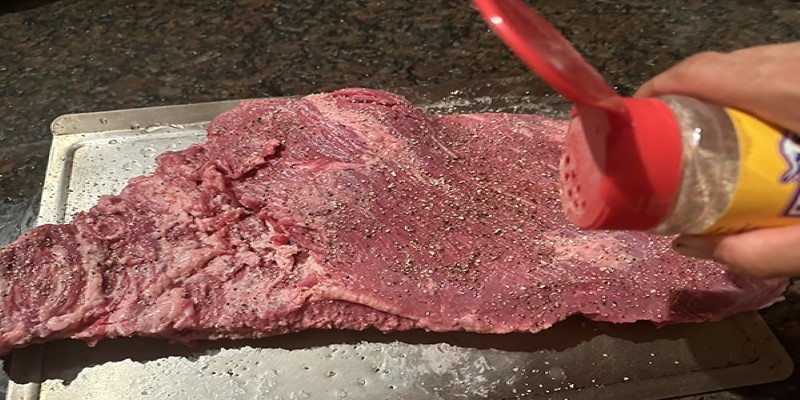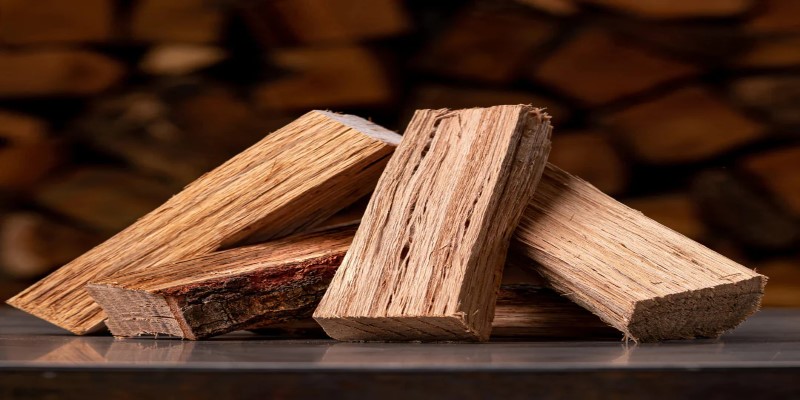Essential Tips for Smoking Beef Brisket Right
Smoking a beef brisket isn't just cooking—it's an art. The slow dance of fire, smoke, and time transforms a tough cut of meat into something juicy, flavorful, and utterly irresistible.
Smoking a beef brisket isn't just cooking—it's an art. The slow dance of fire, smoke, and time transforms a tough cut of meat into something juicy, flavorful, and utterly irresistible.
But let’s be honest. Brisket is tricky. One wrong move, and you could end up with a dry, tough piece of meat instead of the melt-in-your-mouth perfection you were dreaming of.
So, how do you get it right? Whether you're a backyard BBQ enthusiast or trying your hand at brisket for the first time, here are the essential tips to know to smoke a beef brisket like a pro.
Choosing the Right Brisket
It all starts with the cut. Not all briskets are created equal, and picking the right one makes a big difference.
Fat Content Matters
Brisket comes from the lower chest of the cow. It's a naturally tough cut that needs slow cooking. The marbling—the white streaks of fat within the meat—is key to keeping the brisket moist. Look for one with even fat distribution throughout.
Whole Packer vs. Flat vs. Point
A whole-packer brisket includes both the flat (leaner section) and the point (fattier section), making it the best choice for those who want the whole brisket experience with a balance of tenderness and flavour. The flat cut is easier to handle, leaner, and ideal for those who prefer neatly sliced brisket over shredded meat. In contrast, the point cut has more marbling, making it richer in flavour and perfect for creating mouthwatering burnt ends. For the best results, choosing a prime-grade brisket is recommended, as it has more marbling than choice or select grades, resulting in a juicier and more flavorful end product.
Prepping Your Brisket

Before the brisket ever touches the smoker, proper preparation is essential.
Trim the Fat (But Not Too Much!)
A thick fat cap can prevent the smoke and seasoning from penetrating the meat, but removing too much will dry your brisket. To keep it juicy, aim to leave about ¼ inches of fat on the brisket.
Season Simply
When it comes to brisket, less is more. A classic Texas-style rub of kosher salt and black pepper (often called the "Dalmatian rub") is all you need. Some pitmasters add garlic powder, onion powder, or paprika, but avoid overly complicated rubs. Let the smoke and meat shine.
To Inject or Not?
Some BBQ experts inject their brisket with beef broth, Worcestershire sauce, or melted butter to add moisture. While not necessary, it can help if you’re worried about dryness.
Setting Up the Smoker
Now, let’s talk about the star of the show—your smoker.
Best Wood for Smoking Brisket
Hardwoods like oak, hickory, pecan, and mesquite are excellent choices for smoking brisket, each offering unique flavours. Oak is a great option, providing a strong but not overpowering smoke flavour. Hickory delivers a slightly bolder taste, perfect for those who enjoy a rich, smoky profile. Pecan adds a subtle nutty sweetness, balancing out the meat's deep flavours. Mesquite, the strongest of the four, should be used sparingly or mixed with milder woods to prevent overpowering the brisket. Softwoods like pine should be avoided, as they contain sap and chemicals that can ruin the meat's flavour and texture.

Temperature Control Is Everything
Brisket smokes best at a low and slow temperature—typically 225–250°F (107–121°C). Maintaining a steady temperature is crucial, as wild swings can lead to uneven cooking.
Use a good thermometer to monitor both the smoker's and the brisket's internal temperature.
The Smoking Process
This is where patience comes in. Smoking a brisket is an all-day event, but the results are worth it.
Fat Side Up or Down?
The best choice depends on your smoker. Fat-side up helps baste the meat as it renders but may wash off the rub if too much fat melts. Fat-side down protects the meat from direct heat in offset smokers or pellet grills.
The Stall: What It Is and How to Beat It
At around 150–170°F, the brisket’s internal temperature might suddenly stop rising. This is called the stall, and it is caused by moisture evaporating from the meat and cooling it down.
You have two choices:
1. Wait it out (it will eventually start rising again).
2. Use the Texas Crutch—wrap the brisket in butcher paper or aluminium foil to speed up the cooking process and keep it moist.
Butcher paper is preferred since it allows some smoke to pass while keeping moisture locked in.
When Is Brisket Done?
The brisket is ready when it reaches an internal temperature of 195–205°F. But more importantly, it should be probe tender. That means when you stick a thermometer or skewer into it, there should be little resistance—like going into butter.
The Resting Period
Don't slice it right away! Brisket needs time to rest, so the juices redistribute. Wrap it in foil or butcher paper and let it rest in a cooler (yes, a dry, room-temperature cooler) for at least 1 hour, but preferably 2–4 hours.
Slicing and Serving
How to Slice Brisket Properly
• Use a sharp slicing knife (not a serrated one).
• Always cut against the grain to ensure tender bites.
• Slice the flat into thin slices.
• Slice the point into thicker pieces or chop it for sandwiches.
Burnt Ends: A Special Treat
If you want to make burnt ends, take the point of the brisket, cube it, toss it in BBQ sauce, and put it back in the smoker for another 1–2 hours until caramelized.
Common Mistakes to Avoid
Rushing the process
Brisket takes 10–16 hours to smoke. Don’t rush it.
Not trimming properly
Too much fat or too little can ruin the texture.
Over-seasoning
Let the beef and smoke do the talking.
Skipping the rest
Cutting too soon makes the juices run out, leaving you with dry meat.
Slicing the wrong way
Always cut against the grain!
Final Thoughts: Is Brisket Worth the Effort?
Absolutely. Smoking a brisket isn't just about cooking meat but mastering the craft. Sure, it takes time, patience, and a little trial and error, but once you get it right, there's nothing quite like it.
So fire up that smoker, grab a brisket, and get ready to impress your friends and family. With these essential tips, you’re well on your way to smoking the perfect beef brisket.